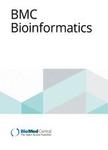版权所有:内蒙古大学图书馆 技术提供:维普资讯• 智图
内蒙古自治区呼和浩特市赛罕区大学西街235号 邮编: 010021

作者机构:Fraunhofer Inst Algorithms & Sci Comp Dept Bioinformat D-53757 St Augustin Germany Rhein Friedrich Wilhelm Univ Bonn Bonn Aachen Int Ctr IT D-53115 Bonn Germany Fraunhofer Ctr Machine Learning St Augustin Germany Enveda Biosci Boulder CO 80301 USA
出 版 物:《BMC BIOINFORMATICS》 (英国医学委员会:生物信息)
年 卷 期:2022年第23卷第1期
页 面:231-231页
核心收录:
学科分类:0710[理学-生物学] 0836[工学-生物工程] 10[医学]
基 金:German Federal Ministry of Education and Research (BMBF) [01ZX1904C]
主 题:Transcriptomic Biological context Co-expression networks Gene expression Network biology
摘 要:Distinct gene expression patterns within cells are foundational for the diversity of functions and unique characteristics observed in specific contexts, such as human tissues and cell types. Though some biological processes commonly occur across contexts, by harnessing the vast amounts of available gene expression data, we can decipher the processes that are unique to a specific context. Therefore, with the goal of developing a portrait of context-specific patterns to better elucidate how they govern distinct biological processes, this work presents a large-scale exploration of transcriptomic signatures across three different contexts (i.e., tissues, cell types, and cell lines) by leveraging over 600 gene expression datasets categorized into 98 subcontexts. The strongest pairwise correlations between genes from these subcontexts are used for the construction of co-expression networks. Using a network-based approach, we then pinpoint patterns that are unique and common across these subcontexts. First, we focused on patterns at the level of individual nodes and evaluated their functional roles using a human protein-protein interactome as a referential network. Next, within each context, we systematically overlaid the co-expression networks to identify specific and shared correlations as well as relations already described in scientific literature. Additionally, in a pathway-level analysis, we overlaid node and edge sets from co-expression networks against pathway knowledge to identify biological processes that are related to specific subcontexts or groups of them. Finally, we have released our data and scripts at https://***/record/5831786 and https://***/ContNeXt/, respectively and developed ContNeXt (https://***/), a web application to explore the networks generated in this work.